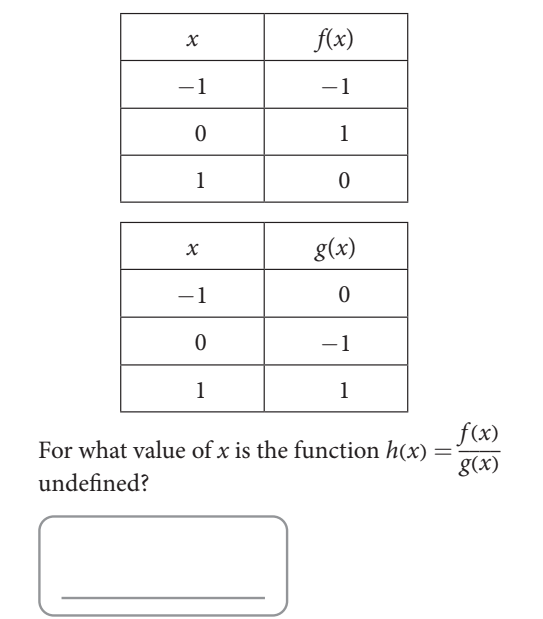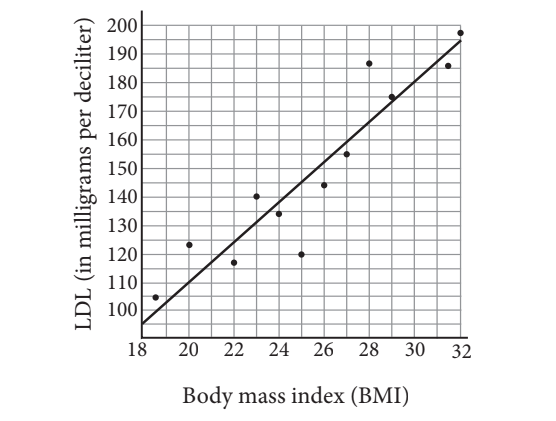SAT Math Topics: What to Know
Are you ready to tackle SAT math? The SAT math section consists of two 35-minute modules with 22 questions each. Questions across the math section will consist of both multiple-choice and student-produced response questions. About a third of the questions in the SAT math section will be word problems that are situated in a real-world context; the rest will be straightforward math questions. Keep reading to learn what’s tested on the SAT math section, then test your knowledge with realistic SAT math practice questions in our short quiz.
[ RELATED: 5 Must-Know SAT Math Tips ]
TABLE OF CONTENTS:
- What math is on the SAT?
- SAT Math Topics: Algebra
- SAT Math Topics: Advanced Math
- SAT Math Topics: Problem-Solving and Data Analysis
- SAT Math Topics: Geometry and Trigonometry
- SAT Math Quiz
What math is on the SAT?
The SAT math test can be broken down into four main content areas:
- Algebra
- Advanced Math
- Problem-Solving and Data Analysis
- Geometry and Trigonometry
Some questions on the SAT math test may include concepts that seem unfamiliar to you, but don’t worry–all the topics tested on the SAT math test are taught in your typical high school Pre-algebra, Algebra I, Algebra II, Geometry, and Trigonometry classes. SAT math does not include Precalculus topics.
SAT Math Topics: Algebra
The SAT math section includes 13–15 algebra questions. You will be asked to:
- Solve, create, and use linear equations, linear functions, linear inequalities, and systems of linear equations
- Make connections between different representations of linear relationships
SAT Math: Algebra Practice Question
If 4b − 3 > 7, what is the greatest possible integer value of −2b + 4?
A) −2
B) −1
C) 0
D) 1
Answer Explanation
The correct answer is (A). Instead of solving for b, see if you can solve for −2b + 4 directly. Start by adding 3 to both sides of the inequality to obtain 4b > 10. Next, divide both sides by −2. Remember that when you divide by a negative, you must flip the inequality sign. You get −2b < −5. Now simply add 4 to both sides to obtain the desired expression: −2b + 4 < −1. The greatest possible integer value less than −1 is −2, so (A) is correct.
SAT Math Topics: Advanced Math
The SAT math section includes 13–15 advanced math questions. You will be asked to:
- Interpret, solve, create, and use equations with absolute value, equations with radicals, quadratic equations, exponential equations, polynomial equations, rational equations, and other nonlinear equations
- Make connections between different representations of nonlinear relationships between two variables
SAT Math: Advanced Math Practice Question

Answer Explanation
The correct answer is −1. Recall that division by 0 is undefined. Therefore, a value of x that makes the denominator g(x) equal to 0 would make the function h(x) undefined. According to the table, g(x) = 0 when x = −1. Enter −1.
SAT Math Topics: Problem-Solving and Data Analysis
The SAT math section includes 5–7 problem-solving and data analysis questions. You will be asked to:
- Solve questions involving: ratios, rates, proportions, units, percentages
- Analyze and interpret data, including distributions and scatterplots
- Calculate and interpret probability and conditional probability
- Calculate and/or interpret statistical measures, including mean, median, range, standard deviation, and margin of error
- Evaluate statistical claims
SAT Math: Problem-Solving and Data Analysis Practice Question

The scatterplot shows the relationship between the body mass index and the low-density lipoprotein (LDL) for 12 people, along with the line of best fit for the data. How many of the 12 people have an actual LDL that differs by 10 or more milligrams per deciliter from the LDL predicted by the line of best fit?
A) 1
B) 2
C) 3
D) 4
Answer Explanation
The correct answer is (C). Each grid line along the vertical axis represents 5 units, so look for points that are at least two grid lines away from the line of best fit. The people who have BMIs of 20, 25, and 28 have LDLs that are 10 or more milligrams per deciliter greater than the LDLs predicted by the line of best fit. This represents 3 people. (C) is correct.
SAT Math Topics: Geometry and Trigonometry
The SAT math section includes 5–7 geometry and trigonometry questions. You will be asked to:
- Solve questions involving:
- Area
- Volume
- Lines
- Angles
- Triangles
- Right triangles
- Trigonometry
- Circles
SAT Math: Geometry and Trigonometry Practice Question
A rectangle has a width of 2a. If the length of the rectangle is 3.5 times its width, what is the perimeter of the rectangle, in terms of a?
A) 5.5a
B) 9a
C) 11a
D) 18a
Answer Explanation
The correct answer is (D).
The perimeter of a rectangle is 2(length) + 2(width). In this case, the rectangle’s width is 2a. The question states that the length is 3.5 times the width, so that’s 3.5 × 2a = 7a. Plugging these values into the perimeter formula yields 2(7a) + 2(2a) = 14a + 4a = 18a. Choice (D) is correct.
SAT Math Quiz
Test your readiness for the SAT math section with our practice quiz.
Written by Kaplan experts, reviewed by Melissa McLaughlin, Pre-College Content Developer and Heather Waite, Director of Content and Curriculum, Pre-College at Kaplan North America.



